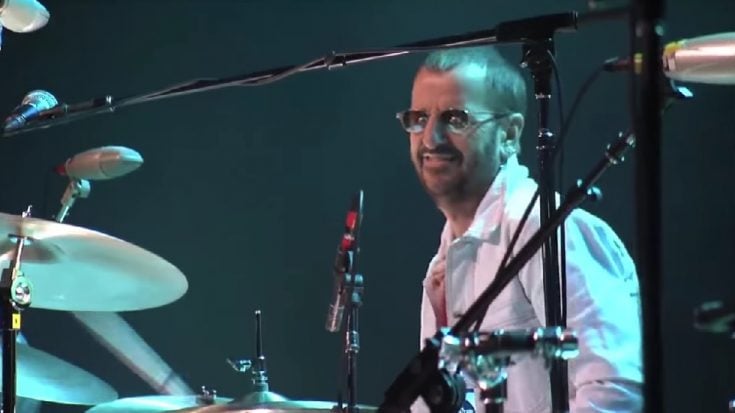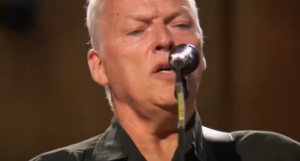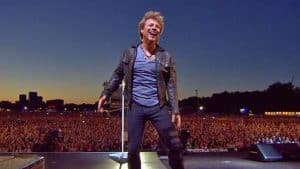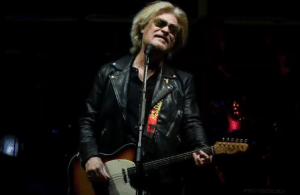10 Funny Rock Songs In Rock History

via Classic Rock on MV / Youtube
Compiling a list of the “funniest” songs in rock music might seem like a simple task. After all, humor is a subjective experience, and millions of rock songs contain some level of comedic wit. However, the challenge lies not just in picking songs you find funny, but in choosing ones that will resonate with a diverse audience.
The key obstacle? Humor often has an expiration date. Jokes tied to specific cultural moments or trends can become lost on listeners unfamiliar with the context. On top of that, everyone finds different things funny. What one person finds side-splitting, another might find cringe-worthy.
So, with that in mind, this list aims to present a diverse selection of rock songs that, despite the inherent subjectivity of humor, have the potential to tickle your funny bone regardless of your individual sense of humor.
10. Frank Zappa – “Why Does It Hurt When I Pee?” (1979)
Kicking off our list is the legendary Frank Zappa with his classic track, “Why Does It Hurt When I Pee?” This song, a prime example of Zappa’s signature humor, wastes no time getting to the point. Its absurdity immediately tickles the funny bone, leaving listeners in stitches.
For dedicated Zappa fans, this track comes as no surprise. Throughout his career, Zappa masterfully incorporated humor into his music, dating back to his earliest works. In fact, “Why Does It Hurt When I Pee?” overflows with hilarious lines, many too graphic to be mentioned here.
If you haven’t experienced this comedic masterpiece, it’s worth dropping everything and grabbing your headphones. Released in 1979 on the album Joe’s Garage, the song is just one example of Zappa’s genius. Given the sheer volume of his humorous tracks, we’ve limited ourselves to just this one, but trust us, Zappa fans – there are hundreds more where that came from.
9. Loudon Wainwright III – “Dead Skunk” (1972)
Released in November 1972, “Dead Shunk” by Loudon Wainwright III took the world by surprise. With its absurd humor, the song resonated deeply with this age group, capturing the essence of middle school hilarity in a way that would be echoed a year later by the movie Blazing Saddles.
“Dead Shunk” tells the unfortunate tale of a skunk meeting its demise in the middle of a busy road, leaving behind a pungent reminder for everyone unfortunate enough to encounter it. The song’s vibrant storytelling, with its blend of banjo twangs, guitar strums, and lively instrumentation, paints a vivid picture of this olfactory assault.
Wainwright himself claimed the song was inspired by a real-life encounter with a skunk, one that he didn’t initiate but certainly finished. Famously, he wrote the entire song in just 15 minutes. Despite its, uh, unique subject matter, “Dead Shunk” remains a memorable, and undeniably pungent, landmark in Wainwright’s career.
8. Harry Chapin – “30,000 Pounds of Bananas” (1974)
The late Harry Chapin, lauded as one of music history’s greatest storytellers, takes the eighth spot on our list with “30,000 Pounds of Bananas”. For many fans, this song holds a special place, particularly for those who witnessed Chapin’s captivating live performances, either solo or with his band.
His ability to weave narratives and command the stage with passion left audiences mesmerized. For those unfamiliar, Chapin’s live album Greatest Stories Live is highly recommended, showcasing his storytelling prowess at its finest.
While hits like “Cats in the Cradle” and “Taxi” garnered widespread recognition, hardcore fans hold “30,000 Pounds of Bananas” in high regard. The song’s impact is particularly strong for those who have traveled through Scranton, Pennsylvania, as the city serves as a constant reminder of the song’s quirky and memorable story.
7. Ray Stevens – “The Streak” (1974)
A recurring theme emerged while compiling this list: many initial song choices stemmed from the 1973-1974 era. It’s worth noting that this period also coincided with national turmoil surrounding the Vietnam War and Watergate, potentially making audiences more receptive to comedic music as a form of escape. This theory aligns with the success of Cheech & Chong in the early 1970s.
Ray Stevens’ “The Streak” perfectly encapsulates this trend. Released in 1974, the song satirized the nationwide “streaking” craze, a fleeting phenomenon that brought both chaos and amusement in its wake. Using modern terminology, one could describe it as a “meme” that captured the public’s attention for a brief, hilarious period.
A major success for Ray Stevens, “The Streak” cemented its place in music history by becoming his second song to reach number one on the Billboard Hot 100 chart in the United States, reigning supreme for three weeks in May 1974.
6. Queen – “Fat Bottomed Girls” (1978)
Queen’s iconic “Fat Bottomed Girls” needs little introduction. Its suggestive title, found on the 1978 album Jazz, became a cornerstone of the band’s legacy. The song achieved significant chart success, peaking at number 11 in the UK and number 24 on the US Billboard Hot 100.
Lyrically, “Fat Bottomed Girls” celebrates women with fuller figures, playfully connecting with its double A-side “Bicycle Race” through thematic and musical references. The songs share a dialogue, with “Bicycle Race” echoing the sentiment “Fat bottomed girls, they’ll be riding today”, while “Fat Bottomed Girls” itself urges, “Get on your bikes and ride!”
This strategy of releasing double A-sided singles proved successful for Queen, following their previous “We Will Rock You/ We Are The Champions”. The song’s influence extended beyond rock, inspiring the humorous “Big Bottom” by Spinal Tap, solidifying its lasting impact on both rock and pop culture.
5. Napoleon XIV – “They’re Coming to Take Me Away, Ha-Haaa!” (1966)
“They’re Coming to Take Me Away, Ha-Haaa!” occupies a unique space on this list, serving as a reminder that humor is subjective. Some listeners will find the song side-splittingly funny, while others may not be tickled by its unique brand of humor.
Written by Jerry Samuels under the pseudonym Napoleon XIV, the song debuted in 1966 on Warner Bros. Records. This novelty track resonated strongly with American audiences, skyrocketing to number three on the Billboard Hot 100 singles chart by August 13th.
It even managed to surpass the competition, securing the coveted top spot on the Cash Box Top 100 Pop Singles charts. The song’s success extended beyond the United States, achieving the number two position in Canada and landing at number four on the UK Singles Chart.
4. Bob Dylan – “Bob Dylan’s 115th Dream” (1965)
A stark departure from the previous entry is “Bob Dylan’s 115th Dream.” This song, featured on Dylan’s 1965 album Bringing It All Back Home, offers a unique listening experience that rewards close attention.
The track opens with a fascinating glimpse into the recording process. Dylan’s initial solo attempt is cut short by producer Tom Wilson’s laughter, leading to a seamless transition into the full-band version recorded later. This inclusion adds an extra layer of intrigue and authenticity to the listening experience.
One of the song’s most celebrated aspects is its satisfying final verse, which skillfully ties all the narrative threads together. “Bob Dylan’s 115th Dream” builds upon the foundation of Dylan’s earlier track “Bob Dylan’s Dream” from 1963. Both songs utilize a blend of satire and fantasy, weaving together historical voyages, literary references, and contemporary elements.
3. Frank Zappa – “Catholic Girls” (1979)
When it comes to the investigation of notable songs, the list goes beyond just one Frank Zappa song, as was originally proposed. The choice to stray from this limitation is the result of an overwhelming desire based on individual experiences rather than a simple disdain for the rules.
The appeal of “Catholic Girls” is not limited to one aspect; it encompasses a combination of engrossing lyrics, outstanding vocal performances, and lively banter inserted in between verses.
The piece highlights Frank Zappa’s standing as a musical genius and stands as a monument to his creative creativity. This break from the narrative that is all about the ego enables a deeper examination of the song’s complex appeal.
2. Ringo Starr – “No-No Song” (1974)
Ringo Starr, known for his humor during his time with The Beatles, carried that trait into his solo career. One such example is his 1974 song “No-No Song” from the album Goodnight Vienna. Released as a single in the United States in January 1975, it became a major hit, reaching number one in Canada and number three on the Billboard charts in the US, marking his seventh and final top 10 hit.
The song tells the story of the narrator encountering various individuals offering him different substances. A Colombian woman proposes marijuana, a Mallorcan woman suggests cocaine, and a man from Tennessee tempts him with moonshine whiskey.
However, the narrator firmly rejects each offer, citing concerns about his health. The track features the backing vocals of Harry Nilsson and piano by Nicky Hopkins, adding further depth to the song.
1. Charlie Daniels Band – “Uneasy Rider” (1973)
The Charlie Daniels Band’s classic song “Uneasy Rider” closes out the “10 Funny Rock Songs In Rock History” list. Released in 1973, the song masterfully blends spoken-word storytelling with Southern rock, weaving a humorous tale that reflects the societal tensions of the early 1970s.
The cinematic journey of “Uneasy Rider” follows a long-haired, marijuana-loving protagonist driving a Chevrolet, symbolic of the counterculture movement. He finds himself in a precarious situation when his car suffers a flat tire, forcing him to stop at a bar in Jackson, Mississippi.
The ensuing narrative is a clever dance of wits. The protagonist, with quick thinking and audacious bluffing, navigates the brewing confrontation. “Uneasy Rider” not only entertains but also offers a commentary on the cultural clashes between the liberating counterculture and the traditional values of the American South during that era. The song resonated with audiences, reaching number 9 on the U.S. Billboard Hot 100 chart.











